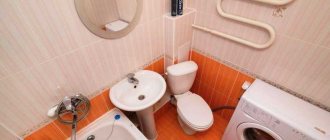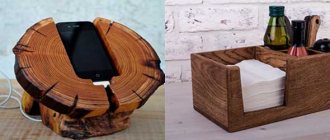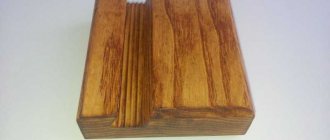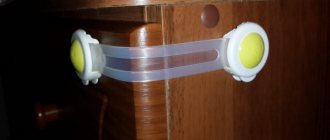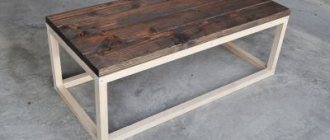With the advent of such a device as a washing machine, housewives were able to devote much more time to their chores. After all, the washing machine took over all the main work of washing things.
But every barrel has its own fly in the ointment. Under incorrect operating conditions, the washing machine vibrates. This, in turn, is fraught with extremely serious consequences, including complete breakdown of the device.
For such situations, the market offers a lot of options for special anti-vibration stands and legs for a washing machine. It is thanks to them that the washing machine is able to continue working at its usual pace and without any complaints in operation.
In order to avoid excessive vibration in the future, you need to understand why the washing machine is jumping.
Causes of vibration
One of the main reasons for excessive vibration is improper installation of the device. In normal operating mode, the washing machine experiences enormous loads from the rotating drum. The average rotation speed is approximately 1000-1500 rpm. in a minute. Due to the unevenly filled drum, the centrifugal force shifts in different directions, causing powerful vibration.
Another cause of vibration is improper loading of laundry. This problem is quite easy to solve at the initial stage of washing. You just need to load the laundry as required by the washing machine operating instructions. In this case, quite strong vibration can occur, which can even cause harm to surrounding objects.
Also, do not exclude the option of poor flooring. Most manufacturers recommend installing the washing machine on a perfectly flat and dense floor, which will allow the washing machine to be fixed in the ideal position. But since most people are not able to provide such conditions in their apartment, during operation the machine can not only vibrate, but also jump.
This is not the entire list of causal factors that in one way or another affect the operation of the machine. Any, even minor, violation of the operating instructions can lead to constantly increasing periods of vibration.
If it turns out that the washing machine is jumping during operation, then measures need to be taken. How to do this?
What causes vibration?
Before you start choosing stands or a mat, you need to understand what causes the washing machine to vibrate. After all, the problem may be caused by a reluctance to study the instructions and, as a result, improper operation of the equipment.
Before starting operation, they forgot to remove the shipping bolts that hold the drum. This not only leads to vibration when washing and spinning clothes, but can be a serious cause of equipment breakdown. It is easy to exclude such a reason.
Just check for the presence of bolts on the rear wall and remove them if necessary.
The most common cause of vibration is violation of equipment installation rules. Be sure to check that the equipment is level. The ideal option for this would be to use the level used by builders.
How to quickly and inexpensively eliminate washing machine vibration
Signs of vibration can be eliminated using various methods - from purchasing special anti-vibration stands to completely redoing the floor covering. Naturally, most people choose the first option, since it is much cheaper and easier to implement. In order to completely eliminate all unnecessary vibrations, you just need to purchase inexpensive pads and use them for their intended purpose.
Anti-vibration stands are a rubber or plastic object that is placed under the support legs of the machine, thereby dampening the vibration vibrations that occur. Typically, the dimensions of a standard stand are 5x5 cm, which allows you to place them under the legs of the washing machine without much effort.
Anti-vibration mats: their effectiveness, types
This rug has undeniable advantages in use:
- smooths out minor unevenness of the floor surface, as a result the legs stand tightly;
- the surface of the mat “sticks” to the floor, that is, you don’t have to be afraid that the machine will “ride” along the bathroom floor during a high-speed spin;
- the mat partially dampens strong vibration, and the equipment will work quieter and smoother.
The material of the mat has a bubble structure, which makes it possible to achieve almost perfect shock absorption and restore its original shape even after a very strong impact.
Attention! Washing machines of small dimensions are characterized by the strongest vibration. Narrow models have an undeniable advantage - they take up little space, but at the same time they are not as stable as large square options.
Rugs are:
- rubber;
- silicone.
You can buy a simple rubber mat; it will cope with noise, protect the floor covering from damage, but will not particularly dampen vibration. But special anti-vibration mats (they are thicker, with a different structure) serve precisely to absorb vibrations.
Types of anti-vibration stands
Depending on the severity of vibration, there is a fairly wide selection of anti-vibration stands. All of them can be divided into 3 groups:
- are common;
- individual;
- anti-vibration rubber feet for the washing machine.
General ones are usually made in the form of a mat that is placed under the base of the machine. At one time it was a fairly popular item that was used not only for the washing machine, but also for the dishwasher. The manufacturing materials are mainly inexpensive polymers, as well as high-strength rubber.
The advantages of such products include their high strength, ease of use, as well as high wear resistance. The disadvantages are its relatively high cost and large area, which under certain conditions can cause some discomfort to apartment residents.
Individual coasters have a slightly different shape. Their material of manufacture is also plastic and durable rubber. But in this case, their sizes are adjusted to the dimensions of the base of the legs. Due to this, they have a more compact shape, but at the same time it is necessary to devote a little more time to their installation.
The advantages of individual anti-vibration stands include their low cost, practicality of use and high wear resistance. The only disadvantage we can highlight is their installation feature, which requires the use of additional tools.
If it is not possible to use stands, you can always use special anti-vibration feet. The essence of their work is that in place of the old metal legs, special rubberized legs are installed, which also dampen vibration. Under certain conditions, this is not only reliable, but also profitable.
Structure and principle of operation of a special mat
A mat made for washing or other equipment that creates vibration is endowed with the main functions, which are to smooth out existing differences in the floor (if leveling has not been carried out) and eliminate vibration of the machine. A special relief layer on the back of the product helps to perform these functions.
In this case, we are talking about a special anti-vibration mat.
Operating principle of stands
The operating principle is very simple. Since plastic and rubber have increased elastic forces and relatively low density, the steel legs of the washing machine literally bite into the material, thereby extinguishing energy.
The opposite situation. When the washing machine is on a dense surface, the energy that comes from the rotation of the drum is transferred to the legs, which are repelled from the floor covering. This creates the effect of a jumping washing machine.
You can also find out on the website how to choose a washer and dryer.
Product benefits
Anti-vibration mounts can solve several problems at once.
The positive aspects include:
- reduced vibration of the device, which reduces the risk of breakdown;
- noise reduction;
- eliminating the washing machine from sliding on the floor.
Thanks to the use of anti-vibration products, you can preserve the tiled floor in the bathroom. Also, supplies will be necessary if the machine is installed in a country house, where floor coverings are often unstable.
How to choose an anti-vibration stand
To choose a high-quality anti-vibration stand, you must follow the following algorithm:
- It is necessary to measure the diameter and shape of the legs of the device. This is necessary to ensure that the pads fit as tightly as possible and do not allow vibrations to reach the flooring. Based on the measurements obtained, you can immediately determine the size and shape of the linings.
- For a better installation result, it is necessary to choose the most amorphous material. In this case it will be semi-synthetic rubber. It is she who has all the necessary qualities and is able to provide the most excellent performance indicators.
- It is also necessary to be based on financial capabilities. If your budget allows you to purchase more expensive products, then, of course, it is better to use them. But it’s also not worth saving, since such an investment will fully pay for itself in the future operation of the washing machine.
Based on the results, you can purchase one or another stand that will dampen vibration while the washing machine is operating.
How do they look
Anti-vibration stand for a washing machine, round or square, made of polymer material, with a height of 45 to 50 cm. A set of such stands consists of four pieces, mostly white, gray, black or transparent. Transparent linings are made of silicone. The upper side of the lining resembles a cap; we put the machine leg on it.
The side that stands on the floor has a relief surface.
These devices are made from raw materials with high shock-absorbing properties.
How to install stands
If you purchase individual stands, there may be some problems with their installation. But if you follow some tips, the installation process will not cause any difficulties.
First you need to place the washing machine on its side in order to gain access to all the legs. After this, you should thoroughly clean the legs from possible traces of rust, and if any irregularities occur, eliminate them.
When the legs are completely ready, you can begin installation. If the stands do not provide a strong connection, then you just need to place them under the legs of the washing machine. In case of necessary fixation, you will need to purchase glue for connecting metal and polymer surfaces. Then you can simply glue the stands and return the machine to its usual position.
Important! The best option when choosing glue is semi-synthetic based glue.
Next you should test the work. If everything is done correctly, the machine will not vibrate during operation, thereby ensuring a better washing process.
If the machine continues to jump, then you should use other pads, or carry out the installation process from the very beginning.
Tank and drum: what's the difference
First you need to understand the meaning of these words:
- a drum is a cylindrical container where we put laundry, this is where the washing process takes place, which can be observed through the glass door of front-facing machines;
- The tank is also a container where this drum is placed; water with the necessary detergents is poured into it, which enters the drum through special holes.
Important. Note that the drum itself is always made of stainless steel. But the tank can be made of different types of materials (plastic, metal, stainless steel). Attention. Do not confuse the tank with the drum. We put laundry inside the drum, and the drum itself is located inside the washing machine tank.
Tank and drum
How to make linings with your own hands
Like any other item, you can make the lining yourself. At the same time, it is not necessary to have the professional skills of a craftsman, because they can be done even without a special tool.
First you need to decide on the material. In everyday life, it is easiest to find rubber and old plastic, so both options will be considered.
When the material has been found, it is necessary to cut out linings from it that will be slightly larger than the legs of the washing machine. You should also pay special attention to the thickness of the material. It is recommended to use material at least 1 cm thick, since otherwise the vibration will pass through the material into the floor and the machine will jump.
When the workpieces are ready, you need to place them under the legs of the washing machine and adjust their height. If after installing homemade stands the machine still jumps a lot, then it is better to purchase ready-made products. This will save both time and effort.
Installing a washing machine under the sink: pros and cons
People who decide to purchase a sink to install above a washing machine are primarily interested in the advantages of such a plumbing trick and its disadvantages. But most of all they are interested in reviews from owners about the merits of the machine, as the main component of such a design. Let's start with the shortcomings.
The disadvantages of an under-sink washing machine are:
- Limited movement while in the bathroom, as the sharp corners of the machine protrude from behind the sink and there is a risk of slight injury. From a safety point of view, experts recommend buying a washing machine under the sink with a depth of up to 45 cm;
- The machine is inconvenient to use, as the approach to it can be cluttered;
- The need to purchase a special siphon for such a design, since the necessary devices are not included in standard kits;
- The problem of selecting the height and width of the machine. Often equipment of an acceptable size cannot be found in stores. For example, standard 85 cm high and 36 cm deep washers optimize space, but have a huge disadvantage - the sink is raised to a height of up to 100 cm. It will be extremely inconvenient for a child or a small person to use the sink.
The advantages of such a combined installation are:
- Saving space in the bathroom;
- The location of the machine under the sink ensures its good stability, which extends its service life;
- Aesthetic appearance of the room.
A sink above the washing machine will allow you to properly organize your bathroom workspace.
Kitchen placement option
Another common location for installing a washing machine is the kitchen. In this case, in order to save space for other appliances, the question arises of installing the machine and sink under one countertop. This type of installation is called built-in.
This placement of devices looks quite interesting in the interior, since the design of countertops and cabinets can be varied. The advantage of this placement is that it is not necessary to look for a washing machine that is suitable in both size and design. The design of the countertops may contain doors that will close the washing machine when it is not in use, which means it will not be visible at all. And due to the fact that countertops of such designs are made from a wide variety of materials, it can become the highlight of the entire interior, both in the kitchen and in a spacious bathroom.
The most common materials for making countertops are:
- Glass;
- Stone;
- Treated wood.
Having a countertop above the washing machine has significant advantages. You can place jars, hygiene products or other not-so-resistant things on top. During operation, the machine creates vibrations, and the tabletop increases the amount of usable space. This advantage also applies when placing the machine under the countertop in the kitchen. A tabletop is an excellent addition to the interior; it can also help create a more cohesive space by visually connecting interior details into a single whole.
